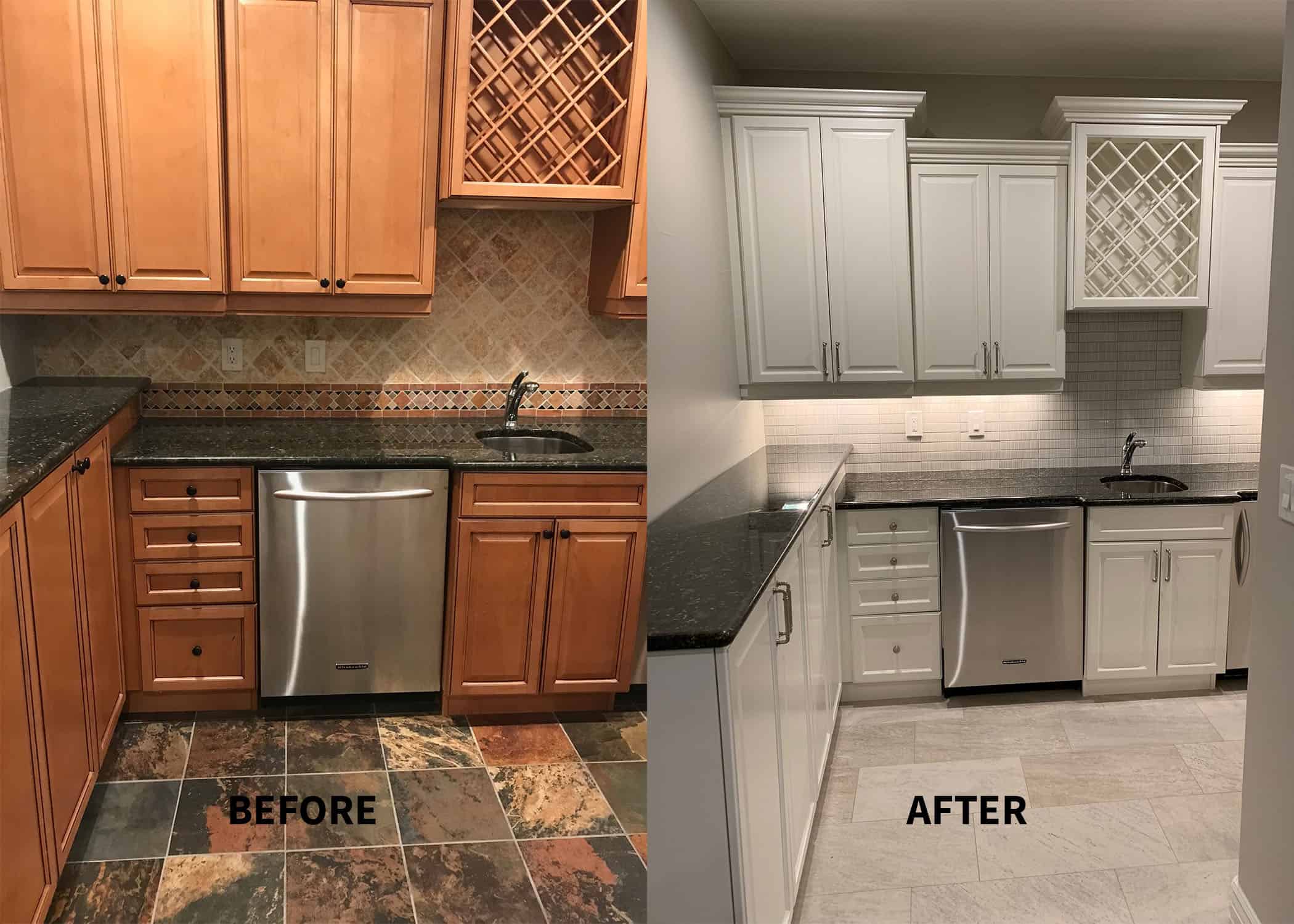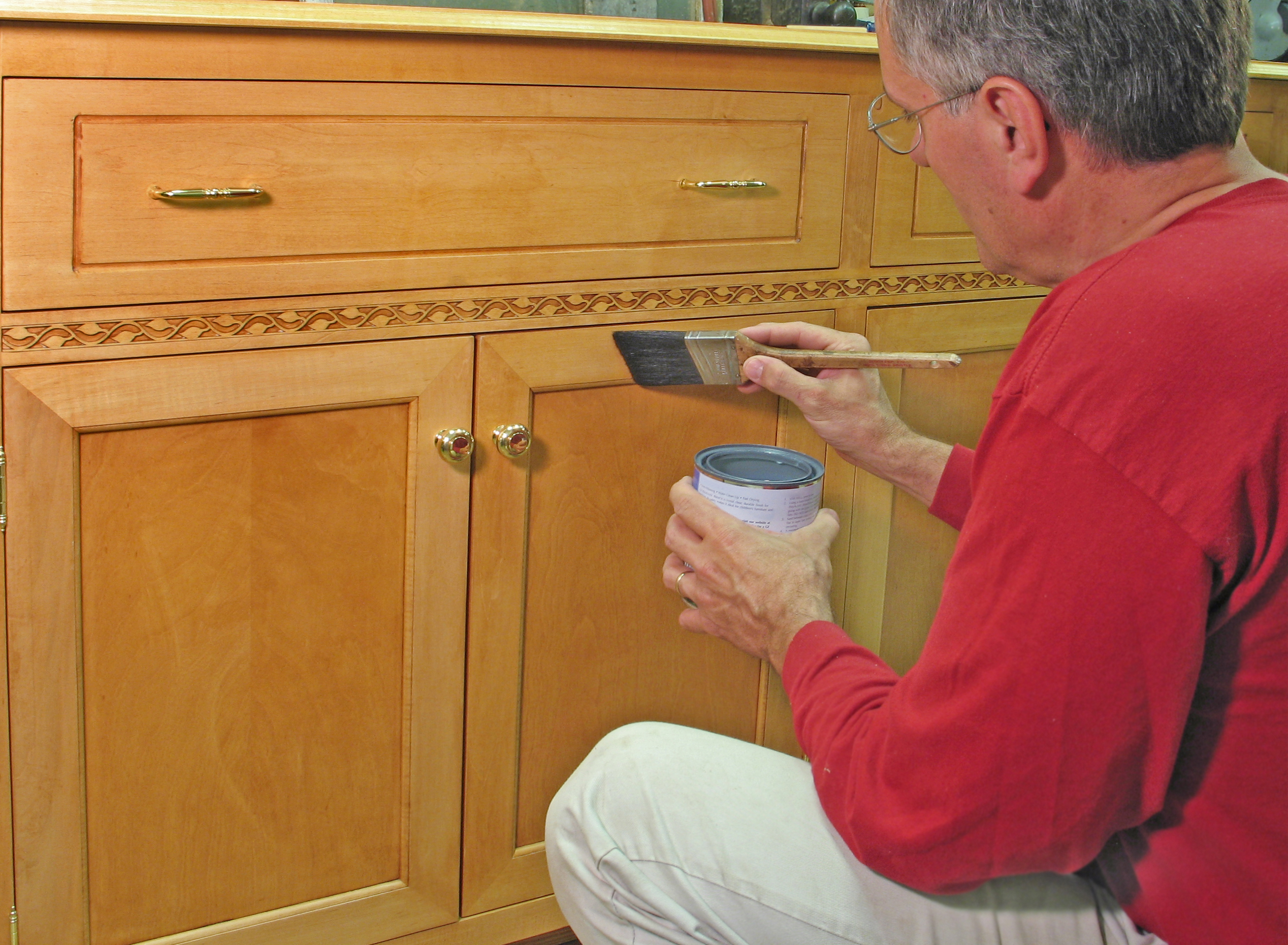Estimating Paint Needs for Kitchen Cabinets

Painting your kitchen cabinets can dramatically update your kitchen’s look. Accurately estimating the amount of paint needed will prevent costly trips back to the hardware store and ensure you have enough to complete the job smoothly. This section will guide you through the process of calculating your paint requirements.
Factors Influencing Paint Quantity
Several factors significantly impact the amount of paint needed for your kitchen cabinets. Understanding these factors allows for a more precise estimate, minimizing waste and ensuring a professional finish.
- Number of Cabinets: A larger kitchen with more cabinets will naturally require more paint than a smaller one. Count all cabinets, including upper and lower units, drawers, and any additional cabinet components.
- Cabinet Size: The dimensions of your cabinets directly affect the surface area to be painted. Larger cabinets require more paint than smaller ones.
- Number of Coats: Most paint jobs require at least two coats for optimal coverage and color saturation. Priming before painting adds another coat. Consider the type of paint; some may require more coats than others.
- Type of Paint: Different paint types offer varying coverage. Oil-based paints often have better coverage than latex paints but require more preparation and longer drying times. Latex paints are generally easier to clean up.
- Paint Coverage per Gallon: Paint manufacturers typically specify the coverage per gallon on the product label (e.g., 350 square feet per gallon). This is a crucial piece of information for accurate estimation.
Measuring Kitchen Cabinets for Accurate Paint Estimation
Precise measurements are crucial for accurate paint estimation. The following step-by-step guide utilizes a measuring tape and simple calculations to determine the total paintable surface area.
| Step | Measurement | Calculation | Notes |
|---|---|---|---|
| 1. Measure Cabinet Faces | Measure the height and width of each cabinet door and drawer front. | Height x Width = Area (per face) | Record measurements for each cabinet face separately. |
| 2. Measure Cabinet Sides | Measure the height and width of each visible cabinet side. | Height x Width = Area (per side) | Consider only visible sides; those hidden within the kitchen layout are not included. |
| 3. Calculate Total Area | Sum the areas calculated in steps 1 and 2 for all cabinets. | Total Area = Σ(Area of all faces) + Σ(Area of all sides) | Ensure all measurements are in the same units (e.g., feet or inches). |
| 4. Account for Waste | Add 10-15% to the total area to account for paint waste, spills, and uneven application. | Total Area x 1.1 (or 1.15) = Adjusted Total Area | This adjustment ensures you have enough paint to complete the project. |
Estimating Paint Needed Using a Simple Calculator
Let’s assume a simplified scenario. Suppose you have 10 cabinets, each with a door measuring 2 feet high and 1 foot wide, and sides measuring 2 feet high and 0.5 feet wide. You plan on two coats.
Total area per cabinet face: 2 ft x 1 ft = 2 sq ft
Total area per cabinet side: 2 ft x 0.5 ft = 1 sq ft
Total area per cabinet: (2 sq ft x 2) + (1 sq ft x 2) = 6 sq ft
Total area for all cabinets: 6 sq ft/cabinet x 10 cabinets = 60 sq ft
Area with 10% waste: 60 sq ft x 1.1 = 66 sq ft
Total area for two coats: 66 sq ft x 2 = 132 sq ft
If one gallon covers 350 sq ft: 132 sq ft / 350 sq ft/gallon ≈ 0.38 gallons
Therefore, you would need approximately 1 gallon of paint.
This calculation can be adapted for different numbers of cabinets and sizes. Remember to adjust for the number of coats and the paint’s coverage per gallon as specified on the label.
Paint Coverage Differences
The coverage of paint varies significantly depending on the type.
- Latex Paint: Generally offers good coverage but might require more coats than oil-based paints for full opacity, depending on the color and surface.
- Oil-Based Paint: Typically provides excellent coverage with fewer coats, but it has a longer drying time and requires solvents for cleanup.
- Acrylic-Alkyd Enamel: Combines the benefits of both latex and oil-based paints, offering good coverage, durability, and easier cleanup than oil-based paints.
Beyond the Basics: How Many Gallons Of Paint For Kitchen Cabinets

Now that we’ve covered the essential steps in calculating your paint needs and preparing your cabinets, let’s delve into some more advanced techniques and safety considerations to ensure a truly professional-looking and long-lasting finish. Paying attention to these details will elevate your project from a simple repaint to a stunning kitchen transformation.
Proper ventilation and safety are paramount when working with paints and solvents. These aren’t optional extras; they’re crucial for your health and the quality of your work.
Safety Precautions and Ventilation, How many gallons of paint for kitchen cabinets
Working with paint involves exposure to volatile organic compounds (VOCs), which can be harmful if inhaled. Always work in a well-ventilated area, ideally outdoors or in a space with open windows and fans. A respirator mask designed for paint fumes is highly recommended, especially when working with oil-based paints. Wear protective clothing, including gloves and eye protection, to prevent skin and eye irritation. Ensure proper disposal of paint cans and waste materials according to local regulations. Remember, a little preparation goes a long way in protecting your health and the environment.
Creative Paint Techniques and Finishes
Beyond a simple solid color, several techniques can add depth, character, and visual interest to your kitchen cabinets. These methods can transform plain cabinets into stunning focal points.
Distressing Technique
Distressing creates a vintage or antique look by simulating the wear and tear of age. Begin by painting your cabinets with your base coat color and allowing it to fully dry. Then, using sandpaper with varying grits (starting with a coarser grit and moving to finer ones), lightly sand certain areas, such as edges, corners, and raised details. Focus on areas that would naturally show wear over time. This reveals the underlying wood or creates a slightly chipped effect. You can also use a dry brush technique with a darker paint to accentuate the distressed areas and add depth. The key is to create a subtle, believable effect rather than a heavily distressed look.
Color Washing Technique
Color washing involves applying a translucent layer of paint over a base coat, allowing the base color to show through. This creates a soft, aged look. First, paint your cabinets with your base coat. Once dry, mix your chosen wash color with a glazing medium or paint thinner to create a translucent consistency. Using a rag or brush, apply the wash color unevenly, wiping away excess to reveal the base coat in varying amounts. This creates a subtle, variegated effect, adding depth and dimension. Experiment with different application techniques to achieve varying levels of opacity and texture.
Two-Tone Finish
A two-tone finish involves using two different colors on the cabinets, often on different parts of the door or drawer. For example, you could paint the cabinet frames one color and the cabinet doors a contrasting color. Alternatively, you could paint the top half of the cabinet doors one color and the bottom half another. This creates a visually striking and modern look. Proper preparation, including careful masking and multiple coats, is essential to achieve clean lines and a professional finish. Consider using painter’s tape to create crisp lines between colors.
